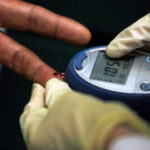A new report shows that almost two-thirds of South Africa’s preschoolers are not getting the health and nutrition they need.
More than half of South Africa’s children live in poverty. The South African Early Childhood Review, which was published on Thursday, revealed that more than 60% of children younger than six are not getting the care they need.
According to the review, this figure is an improvement from 2003 when almost eight in 10 (or 79%) of the country’s children lived in poverty. Although the proportion of children living in households where there is unemployment “reduced from 38% in 2003 to 28% in 2014, there are still more than 1.7-million young children living in households where nobody is working”, says the report.
- READ: Our story on school feeding schemes here
“This number is still way too high,” says Sonja Giese from Ilifa Labantwana, one of the organisations that contributed to the report. “While we tend to think in terms of income, there are multiple forms of deprivation for children living in poverty, including poor nutrition, poor access to healthcare and higher rates of maternal depression.”
The period between gestation and the age of six is when a person’s brain is growing at its fastest and the quality of care a child receives during this period will determine the course of the rest of their life. Children who do not get proper services such as education and healthcare, as well as adequate nutrition, early on, are more likely to face difficulties later in life. “Shortfalls in early childhood development are difficult to correct as time goes by. These children are always playing catch-up and the education gap between them and their peers widens over time,” says Giese.
There have been improvements in areas such as access to healthcare. The study notes that “the proportion of children who are immunised by their first birthday has increased from under 70% in 2002 to 90% in 2014”.
But children are still disproportionately affected by unemployment and poverty.
The review found that 84% of three- to five-year-old children living in the richest 20% of households attend nursery school or similar early education programmes. Less than 60% of children in the poorest 20% of homes are in such programmes. Overall, 64% of children in this age group are receiving any form of early education.
“Children from wealthier families have better access to better quality early learning and therefore have a better chance of succeeding in school and in life. Inequality in South Africa will never be addressed as long as we continue to have inequality in early life opportunity,” says Giese.
The South African Early Childhood Review report was compiled by Ilifa Labantwana, the University of Cape Town-affiliated Children’s Institute, and the planning, monitoring and evaluation department in the presidency.
Ina Skosana was a health reporter at Bhekisisa.





